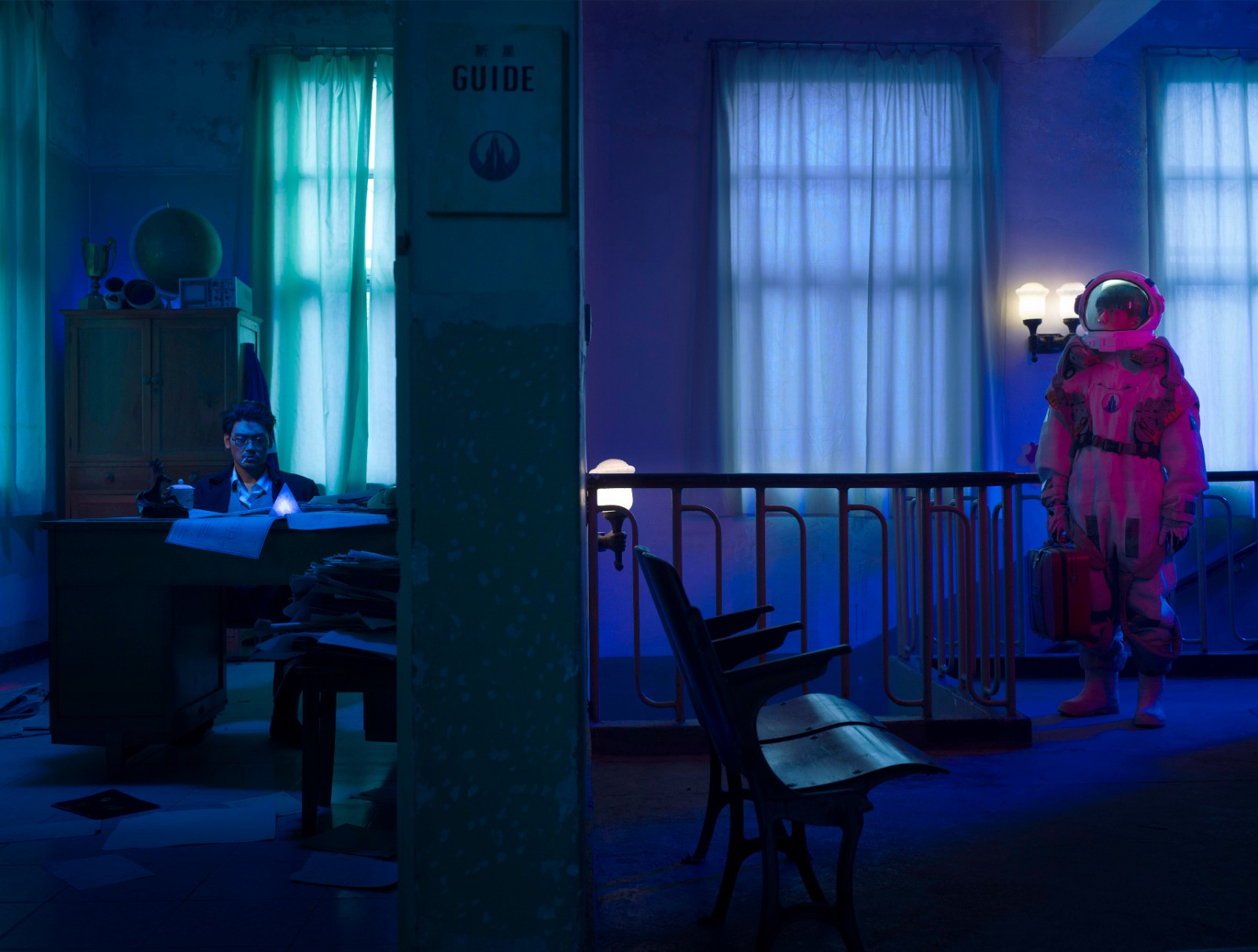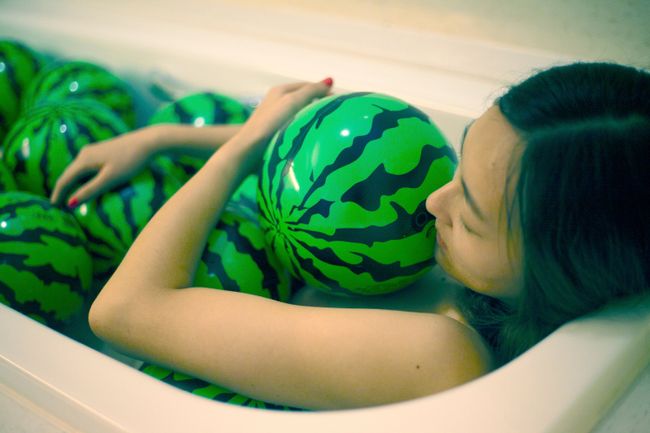
Cao Fei, Nova 18, 2019, Inkjet print on paper, 100.5 x 150 cm
Sprüth Magers presents a solo exhibition of work by Cao Fei that highlights the artist’s recent projects, presenting several of them in Los Angeles for the first time. Films and photographs from her feature-length films Nova (2019) and Asia One (2018), as well as photographs related to previous groundbreaking projects such as Haze and Fog (2013) and La Town (2014), will transform the Los Angeles gallery, transporting visitors through the artist’s reflections on the rapid urbanization of her native China.
Though raised in Guangzhou by two academically trained artists, Cao Fei absorbed a vast range of sources, including avant-garde and French New Wave cinema, and developed an approach that centers everyday characters, usually from China's working class, living between fantasy and reality amid the backdrop of the country's expanding and changing megalopolises. How humans adapt to this change is the recurring theme of her wide-ranging work.
 Cao Fei, Nova 16, 2019, Inkjet print on paper, 110 x 150 cm
Cao Fei, Nova 16, 2019, Inkjet print on paper, 110 x 150 cm
Cao Fei's two most recent feature-length films, Nova (2019) and Asia One (2018), are represented both on screen and through suites of photographs, and each explores this shifting era in different ways. Nova follows the story of a computer scientist engaged in a secretive international project; as part of his experiments he uses his son, who is accidentally turned into a digital version of himself and trapped in an eternal cyberspace. At once a period piece and a sci-fi film, Nova's narrative slowly devolves, and in the words of the artist, 'The film has no sense of time, because the actors are always travelling between the past, present and future.' In Asia One, however, we are rooted in a near future (incidentally this very year, 2021) in which two workers and a robot are left alone in an enormous automated logistics centre. Their labour is repetitive and lonely, but through playful fantasies and emotional connection, human and AI consciousness begin to merge.

Cao Fei, Asia One 01, 2018, Inkjet print on paper, 90 x 135 cm
Also on view are two earlier projects that exhibit this same sense of beauty and melancholy, always punctuated by moments of humor, which have come to characterise Cao Fei's luminous films. La Town (2014), with its French-language voiceover and intensive pacing, recalls Alain Resnais' filmic masterpiece Hiroshima Mon Amour (1959), albeit rendered through scene after scene of miniatures reeling after a massive, mysterious catastrophe—though many simply carry on with their daily lives. A sense of existential dread pervades the film, and one that could be found in any twenty-first century locale. Haze and Fog (2013) also plays with cinematic genres, this time the western zombie film with hints of Jean-Luc Godard's camerawork and vignettes depicting different scenes of work and family life in China. Cao Fei created this work in response to the economic crisis of 2008 in an effort to describe the feeling of entrapment, both internally and externally, within a perpetual socioeconomic fog.

Cao Fei, Haze and Fog 04, 2013, Inkjet print on paper, 70 x 105 cm
Finally, the exhibition includes sculptures from Cao Fei's 'Rumba' series, which recast the popular Roomba robotic vacuum cleaners as actors moving across pedestals. Because of the machines' internal mechanisms, they stop short of the pedestal edges and continue their electronic dance as if performing on a stage. These works also relate to a film by Cao Fei in which the vacuums move absurdly through urban spaces. This element of repetitive performance, of choreographed movements, and of attempting to break the bounds of one's current reality, pervades all of Cao Fei's projects to form a body of work that mines the depths of twenty-first century global life.
The exhibition is presented as an immersive installation, with the visual vocabulary and setting of Cao Fei's films extending into the exhibition space. On the ground floor, elements featured in Asia One create the backdrop for the screening, such as green plastic flooring, red beam chairs, a yellow grid fence, and wallpaper from a film sequence. On the second floor, the viewer is being transported into the scenery of Nova set in the disused Hongxia Theatre in Beijing, a mid-twentieth-century film theatre decorated in the style of the Sino-soviet alliance—as well as the artist's studio space.
About the artist
Cao Fei (*1978, Guangzhou) lives and works in Beijing. Selected solo shows include Serpentine Galleries, London (2020), Centre Pompidou, Paris (2019), the Robert H. N. Ho Family Foundation Chinese Art Initiative at Guggenheim Museum New York, Tai Kwun Contemporary in Hong Kong and K21 Düsseldorf, Dusseldorf (all 2018), MoMA PS1 (2016), Secession, Vienna and Bonnefantenmuseum, Maastricht (both 2015) and Tate Modern, London (2013). Cao Fei is the recipient of the Deutsche B?rse Photography Foundation Prize 2021.
About the exhibition
Dates: October 8–December 22, 2021
Venue: Sprüth Magers, Los Angeles
Courtesy Sprüth Magers.




























